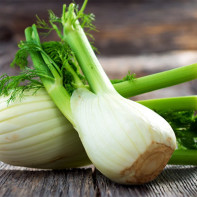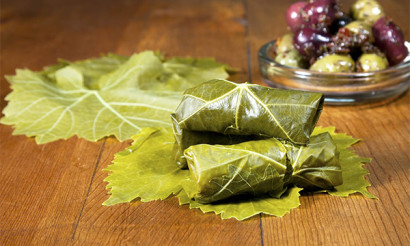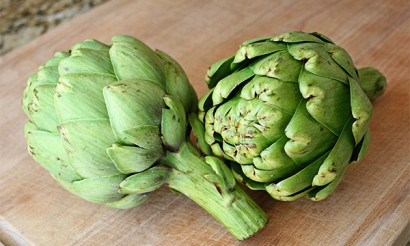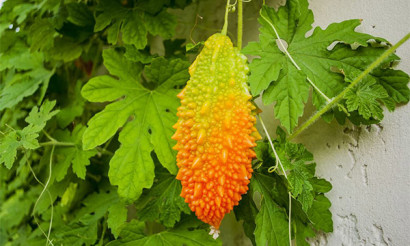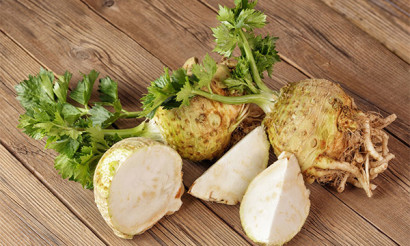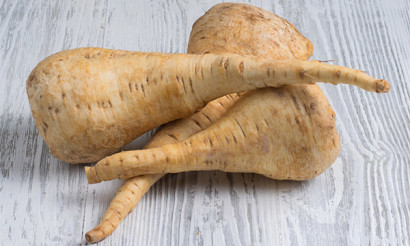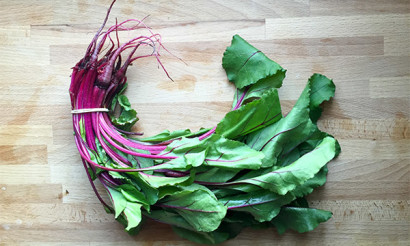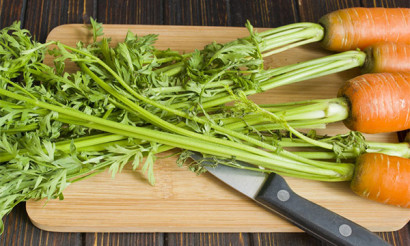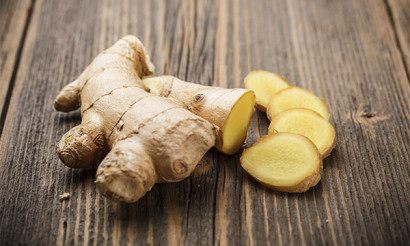Fennel: health benefits and harms
A perennial herb, similar to dill, but with a bright anise smell, is called fennel. It is widespread in nature, every July meadows are filled with characteristic yellow umbrellas. The plant has been used since ancient times as a medicinal plant, the first medical works about it were written by Dioxoride and Avicenna. Later, the culinary potential of fennel was also discovered, it goes to pickles, marinades, and is used as a seasoning for fish and meat.
- What is fennel and how does it look
- Fennel and dill: what is the difference
- Composition and calorie content
- Useful properties of fennel
- General benefit
- For women
- For men
- During pregnancy
- When breastfeeding
- For children
- When losing weight
- Fennel oil: properties and applications
- What are the benefits of fennel seeds
- Fennel tea: benefits and harms
- Fennel in medicine
- With diabetes
- With pancreatitis
- With gastritis
- For the intestines
- For constipation
- With gout
- For the liver
- Fennel-based traditional medicine recipes
- Fennel in cosmetology
- Cooking Application
- What can be replaced
- Harm and contraindications
- How to choose and store fennel
- What can be prepared from fennel: recipes
- Baked Fennel with Cheese
- Stewed fish with tomatoes and fennel
- Interesting facts about fennel
What is fennel and how does it look
Fennel is a bright representative of the Celery family (Apiaceae), it is a perennial flowering plant with a spindle-shaped rhizome. The stems are upright, round, with a slight bluish bloom. The leaf is cut into small filiform slices, so young fennel is often confused with dill. However, this plant grows up to 220 cm in a favorable climate. In bloom, fennel is also similar to dill - it forms a complex umbrella of many yellow flowers. Each gives a fruit - a small oblong-shaped seed up to 10 mm long.

When growing fennel is very undemanding to the soil, tolerates the close proximity of other crops. However, the crop depends on the climate, as the plant is very thermophilic.
Fennel and dill: what is the difference
If you put a sprig of fennel and a sprig of dill nearby, few will be able to guess that these are two different plants. Moreover, the popular name for fennel is pharmaceutical dill, although this is fundamentally wrong, morphologically they are not even close relatives.
The main household difference between dill and fennel is in the smell, it is completely different. The tart and spicy smell of dill twigs differs from the persistent anise and slightly sugary aroma of fennel. Externally, the plants also differ in the structure of the rhizome, the thickness and height of the stems. Dill blooms a month earlier - from June to July, while fennel blooms closer to August. By the way, dill seeds are small and regular in shape, whereas in fennel they are massive and more elongated.
Even greater differences in the effects of plants on the body. Dill has established itself as a great seasoning for any dish, salting or sauce. In medicine, it is used as a diuretic and an adjuvant in diseases of the gastrointestinal tract. Fennel is not so popular in cooking, although it has found its place in marinades, pickles and many dishes of Caucasian and Mediterranean cuisine. Medical use is extremely extensive and has more than 2,000 years. In general, it has a sedative effect, is an antispasmodic, helps to gently solve the problem of chronic constipation, has pronounced expectorant properties. Essential oil is actively used as an adjunct in liver therapy.
Composition and calorie content
Fennel contains a lot of useful vitamins, essential and fatty acids, as well as the most important micro and macro elements. Especially a lot of vitamin C, PP and A. There is zinc, phosphorus, manganese and calcium. However, now much depends on the environmental situation at the place of cultivation. Fennel easily picks up quite a lot of heavy metals from the soil.Therefore, it is highly discouraged to collect wild plants from busy roads or in meadows near plants.
In general, the reference composition of 100 g of fennel is as follows:
- vitamin A - 7 mcg;
- Vitamin B1 - 0.4 mcg;
- Vitamin B2 - 0.35 mcg;
- vitamin B6 - 0.45 mcg;
- Vitamin C - 21 mg;
- vitamin PP - 6 mg;
- calcium - 1196 mg;
- magnesium - 385 mg;
- sodium - 88 mg;
- potassium - 17 mg;
- phosphorus - 485 mg;
- iron - 18 mg;
- zinc - 3.5 mg;
- copper - 10 mcg;
- Manganese - 6.5 mg.
The calorie content of 100 g of fennel is 345 calories. The nutritional value:
- carbohydrates - 12.5 g;
- fats - 14.8 g;
- proteins - 15 g;
- dietary fiber - 40 g;
- water - 8.2 g;
- ash - 9 g;
- saturated acids - 0.5 g.
Useful properties of fennel
General benefit
The healing powers of fennel have been known since ancient times. The medical works of Dioscorides, Pliny, Avicenna mention this plant as extremely useful, appearing in a number of recipes and healing products. Despite the development of technology, fennel preparations, herbal preparations, and essential oils are often prescribed by official medicine today.
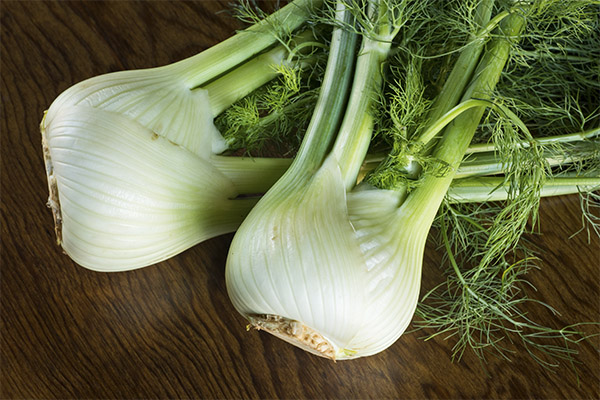
Fennel has the following proven beneficial properties:
- is an expectorant;
- soothing;
- relieves spasms;
- is an antioxidant;
- removes inflammation;
- dilates blood vessels;
- enhances the separation of milk in women;
- evens out skin tone;
- It has a mild healing effect;
- saturates the subcutaneous layer with vitamins, improving tone.
In medicine, plants grown in ecologically clean zones are used. At the same time, the roots, stems, leaflets, inflorescences and seeds go into the preparations. Various forms, powders, essential oils and decoctions are used.
Mediterranean cooking uses fennel in various forms. For example, baked fish with grated fennel root acquires a particularly refined aroma and taste. Stems, leaves and flower beds are actively used in marinades and pickles. They not only enrich the aromatic bouquet of the product, but also significantly increase the preservation of canned food, since fennel juice has an antiseptic effect.
For women
Even in Ancient Greece discovered the special properties of fennel - it perfectly stimulates lactation. The medical collection, verified by two millennia, consists of fennel fruits, anise seeds and oregano in the proportions of 1: 1: 1. It should be poured with boiling water and insisted for several hours. There is a significant improvement in breastfeeding, while the taste and composition of milk remains almost unchanged. Numerous studies have been carried out by modern medicine, and now fennel is recommended as a remedy in therapy for lactation disorders. This is confirmed not only by American, but also by domestic scientists. Studies of the Center for Family Planning and Reproduction (CPSR) showed that in the group receiving teas based on fennel, the frequency of breastfeeding increased by 3.5 times.
With menopause, concentrated oil is used. It stimulates the production of estrogen, but does it gently, without sudden jumps in hormonal levels. European studies show an average reduction in complaints of the fennel oil group by as much as 15%. The estrogenic effect can be used at any age. It is prescribed for the regulation and normalization of the menstrual cycle, especially when leaving hard hormonal therapy.
For men
Fennel seeds began to be used as an aphrodisiac for men in ancient Egypt. From there, the glory of the attraction-enhancing drug passed to Greece and Rome. An alcohol tincture based on dry wine, fennel seeds, celery leaves, currants, raspberries and hypericum flowers is used. Daily use of 50 ml of such tincture significantly increases male potency. At the same time, she does it gently and comfortably, unlike modern medications.
Patricians and worthy citizens of Ancient Rome appreciated the effectiveness of fennel oil in removing toxins, toxins and normalizing digestion after another feast. Fennel essential oils in this application have a double effect:
- They have a mild laxative and antispasmodic effect in the gastrointestinal tract.
- Protect the liver during the breakdown of alcohol and heavy foods.
During pregnancy
Modern medicine recommends refusing to take fennel tea and any drugs based on it. He was previously advised as a mild herbal preparation for combating toxicosis in the first trimester of pregnancy, as well as for normalizing bowel function at any time, noting a really soft, fully controlled and comfortable effect. However, published studies prove a significant (more than 12%) increase in miscarriages in pregnant women who consumed fennel tea. Perhaps this is due to the impact on similar groups of smooth muscles, with a large and stable dosage, the active substances of fennel can affect the similar muscles of the uterus.
When breastfeeding
Essential oil and fennel fruits significantly enhance milk separation. Modern medicine considers this an absolutely safe and effective tool. On its basis, many commercial preparations of a similar purpose are produced. Separately, the absence of any effect of fennel on the very quality of milk and its composition was noted. This is really a safe and effective tool - according to Russian studies, the regular use of drugs and teas will increase the frequency of breastfeeding by 3.5 times.
In addition to improving lactation, teas and fennel-based drugs have other qualities that are beneficial for young mothers. They have a mild sedative effect, increase estrogen, and normalize the functioning of the gastrointestinal tract.
For children
A mild preparation is prescribed even to the smallest children. Today, decoctions and teas are considered a safe way to relieve the first colic in a child. However, it is forbidden to give fresh fennel or its seeds until the formation of a stable flora in the child. Usually, heat-treated greens or root can be given from 8 months, and greens from 1.5–2 years.
For children under 7 months of age, dill water or special baby tea is used. The usual dosage is 2 g per glass of boiling water. It can be mixed in baby food and mixes. The main thing is not to exceed a single and daily dose. From the year you can use fennel in vegetable soups and casseroles.
Useful qualities of fennel are actively used in pediatrics, are used to normalize the digestive tract, as an aid in case of poisoning. For colds, rinse is prescribed. The infusion of fruits has a pronounced expectorant effect.
When losing weight
Fennel shows itself well as a means of contributing to weight loss. Moreover, the effect is achieved immediately in several directions. Seeds will help to overcome night appetite. If you want to eat something, just chew a few seeds of fennel. Greens, used during the diet, will help set up digestive processes, achieve better absorption of nutrients. A diet using fennel will be rich, tasty and at the same time low-calorie.
For weight loss, it is recommended to use various vegetable and dietary dishes. Moreover, fennel goes well with other fragrant herbs, for example, excellent, rich and tasty green smoothie is obtained with celery. Diet can really be varied, very tasty, healthy and at the same time affordable. You can focus on Mediterranean cuisine - salads, soups, low-fat fish. All this is generously enriched with seasonings, spices and fennel. Such a diet will not bother, but will be desired, tasty, healthy and interesting to prepare.
Fennel oil: properties and applications
Fennel oil is obtained by steam distillation of seeds. This is a universal product in cosmetology and medicine, and it is also used in cooking limitedly. Among the main proven properties, the following should be highlighted:
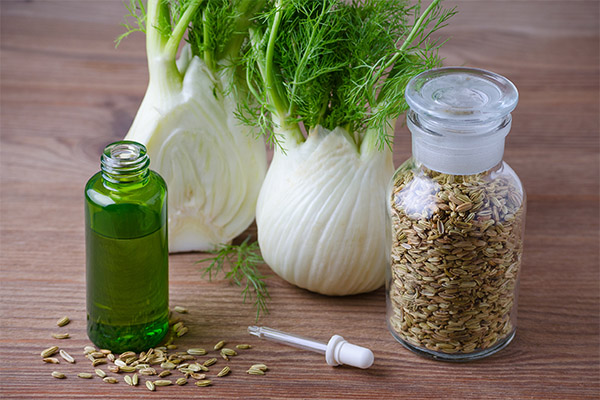
- It is used to clean chambers and apartments, it is enough to spray 2 drops per 5 square meters.m, and the number of fungi in the room is reduced by 5-6 times.
- Stimulates the production of natural estrogen.
- It is a moderate antispasmodic, diuretic, sedative, mild laxative, hepatoprotector.
- Saturates the subcutaneous layer with vitamins and macronutrients.
- It has an antioxidant effect.
- It has anti-inflammatory effect with external use.
Such baggage of useful properties allows you to use fennel oil externally, inside and for processing rooms. The effect on the skin is the most beneficial. Due to the saturation of the subcutaneous layer, wrinkles can be smoothed out, freshness and youthfulness can be restored to the skin. Good results are shown in therapy against acne, acne and dermatitis.
Internally, oil is prescribed and used for various diseases. Women will be able to normalize the menstrual cycle and soften the onset of menopause. For men, it is a good hepatoprotector, especially against alcohol and heavy foods. It is a versatile diuretic and mild laxative. It can be used for cramping, abdominal pain, flatulence and in rehabilitation therapy after poisoning. Moderate sedative properties will help relieve anxiety, relieve insomnia.
What are the benefits of fennel seeds
Fennel seeds are actively used in cooking and adjuvant therapy. Oil has a high concentration of essential substances, so for treatment it is more effective and convenient. However, the seeds have pronounced antioxidant properties. Moreover, unlike oil, it is the shape of the seeds that can reduce the level of bad cholesterol by 7–9% according to a large European study.
Those who wish to lose weight will help suppress their appetite, especially at night. It is enough to gnaw literally a few grains so that the body feels full. Seeds can be used for mild flatulence and digestive problems. Available acids and substances will help to gently solve intestinal problems.
Fennel tea: benefits and harms
The most used form of fennel is tea. It can be given even to infants. It has a rather pleasant taste, brews quickly, it is also used in cosmetology, in the form of lotions. This allows you to remove the effect of sore eyes, accelerate wound healing or remove acne marks. Fennel tea should be used:
- to relieve intestinal colic in children;
- with flatulence;
- to normalize digestion;
- with toxicosis;
- as a mild laxative and diuretic;
- like a mild sedative;
- with colds;
- to normalize the cycle in women with mild disorders;
- in various diets as an adjuvant.
However, like any medicine, fennel tea has certain contraindications and minor side effects. Modern research has established a 12% increased risk of miscarriage in pregnant women with regular use of fennel tea. Epilepsy is also a strict contraindication, because tea can stimulate a new seizure.
Side effects are extremely rare, mainly due to a single or chronic overdose of the drug. The daily total consumption should be considered, including greens in lettuce, baked root in vegetable stew, a teaspoon of oil and an evening handful of fennel seeds. With such a consumption, an allergic reaction can occur, including a serious one, symptoms of toxicosis and heart rhythm disturbance. In chronic overdose, addiction to the stimulation of the intestines is noted, after stopping intake, peristalsis decreases sharply, serious stagnant effects and constipation occur.
Fennel in medicine
From the days of Ancient Egypt and Greece to the present day, fennel has been actively used by official medicine. Even modern technologies and medicines have not been able to displace a plant that has been tested for millennia.
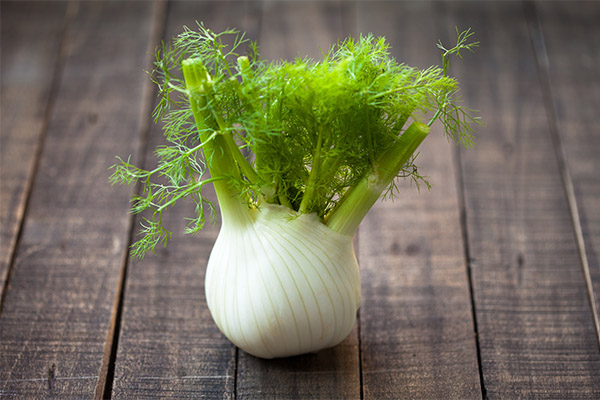
Fennel-based preparations are particularly recognized for their mild and controlled effects.This is an excellent solution for maintenance therapy and for minor violations. Today various forms of fennel are prescribed:
- with gastritis of various nature;
- as supportive therapy for peptic ulcer disease;
- with flatulence;
- to alleviate the condition of gout;
- with chronic gallstone disease;
- for gargling with tonsillitis, bronchitis and SARS;
- in the initial stages of hypertension;
- with chronic pain and cramping;
- to relieve swelling with fluid stagnation;
- with pancreatitis as part of therapy;
- as a hepatoprotector as part of complex therapy;
- to normalize the hormonal background in women;
- as a drug to improve lactation;
- during tantrums, states of nervous excitement as part of therapy;
- as a light sleeping pill as part of complex medicines.
In official medicine, two main forms are used - tea and oil. The first one has the mildest effect, it can be given even to infants, and target herbs can be formed on its basis. Fennel oil is a squeeze of all the active ingredients of a plant, it is easy to apply it, choose a dosage, it has the least side effects.
With diabetes
Fennel can be actively used both in the diet of diabetes patients and in maintenance therapy. Roots, leaves, seeds and oil have an extremely low glycemic index. This allows you to use them without fear of problems. Fennel is recommended for all types of diabetics.
Useful properties lie in the high content of potassium, which increases the body's sensitivity to insulin. Essential oils and vitamin C also activate natural mechanisms to lower blood sugar in patients with type 2 diabetes.
Important: fennel glycemic index - 15 units.
With pancreatitis
Pancreatitis is an extremely unpleasant and dangerous disease that requires adequate diagnosis. In some cases, only surgery is indicated, and this is a matter of survival. However, in a chronic course, surgical intervention can be avoided by limiting itself only to drug therapy.
The key point is that fennel will not be able to cure or heal the pancreas, slow down or stop the destructive processes in the gland. What is needed is medication as prescribed by a doctor. In this case, the infusion of fennel seeds fits perfectly into the treatment regimen, significantly alleviating the condition. You need 3 teaspoons of seeds for an hour to insist in a glass of boiling water. Take 100 g 4 times a day.
With gastritis
Fennel has stimulating and analgesic qualities. It is actively used for gastritis as part of the fees. For example, gastric, monastic and others. This is a balanced, natural, and most importantly, effective therapy.
It is important to establish an accurate diagnosis based on laboratory research. There are different types of gastritis, and even fennel is used in different ways. The most universal prescription allows you to alleviate symptoms and is relatively comfortable to wait for a doctor. You need to take a spoonful of honey and add 5 drops of fennel essential oil. Take three times a day.
After establishing the type of gastritis, therapy is prescribed, which almost always includes fennel. The diagnosis should answer the question, in what dosage and dosage form should the plant be prescribed.
For the intestines
Tea and fennel oil are very effective in normalizing bowel function. It can be used for various disorders, flatulence, colic, pain and toxicosis. The tool will mitigate or completely eliminate negative symptoms. Preventive use is also allowed, in this case it is better to use tea from fennel or a special intestinal collection. The overall effect will be in the normalization of digestion in the later stages and the activation of intestinal motility.
Pharmacy teas can be used according to the instructions, usually 2-3 times a day.Fennel oil is used in therapy, it should be taken 5-8 drops 3 times a day after meals. You can use it as a sweetener, such as sugar.
For constipation
Modern medicine can offer a lot of laxatives, but they are all far from ideal. Usually you want a really mild laxative that will solve the problem asymptomatically and comfortably. Fennel is just such a remedy. As a drug, it is necessary to take oil on sugar or honey. However, tea is able to solve the problem of chronic constipation, it normalizes the entire process of digestion of food and intestinal activity. Pretty quickly, the chair becomes regular, soft, and going to the toilet - as comfortable as possible.
With gout
The disease is extremely unpleasant, and today there is no adequate and effective treatment for it. Fennel root can somewhat alleviate the condition of the patient. To do this, you need to make a decoction based on 25 g of root per 1 liter of water. Boil everything for 3 minutes, and then close the lid and insist 10 minutes. Drink one glass daily.
For the liver
Fennel essential oil has a pronounced hepatoprotective effect. This is especially true against the background of alcohol and heavy food abuse. Oil has a complex mechanism of action, it stimulates metabolism specifically in relation to alcohol and heavy foods, which allows you to quickly get rid of negative symptoms and normalize the general condition. By the way, this was noticed in ancient Rome and began to actively use oils and fennel seeds in front of large banquets and bacchanalia.
Also, fennel oil is actively used in complex treatment programs to restore liver function, in postoperative remission. It should be taken as prescribed by the doctor, usually 3-4 times a day before eating.
Fennel-based traditional medicine recipes
Fennel is especially widely used in folk medicine, both independently and as part of combination products. Mostly used oil, seeds and herbs.
- For bronchitis, it is recommended to dissolve 7-10 drops of fennel essential oil in 200 ml of boiled milk. For taste, you can add a spoonful of sugar or honey. Take warm 3 times a day.
- Coughing fits can be mitigated using 5 g of crushed seeds, they must be poured with a glass of boiling water and cook over low heat for about 30 minutes. After insisting under the lid for another hour. Take an expectorant 2 tablespoons before meals, three times a day.
- With flatulence, upset stomach and cramps, it is necessary to take 5 g of crushed seeds and pour 200 ml of boiling water. Insist under the lid for 10 minutes, then strain and take 100 ml three times a day before meals.
- To increase the milk produced, a combined preparation is used. It is necessary to take 1.5 g of fennel seeds, anise and dill and stir everything in a glass of sour cream. Transfer to the oven and bake for half an hour at a temperature of 120 degrees. Take once daily before bedtime.
- Another recipe for lactation is based on milk. It is necessary to grind 30 g of fennel seeds and insist on warm milk, you can add nutmeg or other spices to taste. After straining, take every morning before breakfast.
- Reduces bouts of pancreatitis infusion of 3 teaspoons of crushed fennel seeds per glass of boiling water. Insist an hour on a steam bath or simply wrapping a container. Take an infusion of 3 tablespoons 4 times a day.
- To normalize your menstrual cycles, you can use fennel grass, carrots and beets. You just need to squeeze the juice in the proportions of 1: 1: 1. Thoroughly mixed cocktail take twice a day in 100 ml.
- For gastritis, a combined herbal preparation is used in the composition of fennel seeds, crushed licorice roots, wheatgrass and marshmallow roots. Take all the ingredients in a teaspoon and pour 200 ml of boiling water. After 30 minutes, add chamomile leaves, mix the composition and leave for another half hour. After straining, drink 200 ml at night.
- Fennel helps in the fight against excess weight.You can add seeds to various dishes and prepare concentrated tea. It is necessary to pour 20 g of crushed seeds into a glass of boiling water, then put on fire for 30 minutes. The resulting broth is taken daily once a day.
Fennel in cosmetology
The plant has long and firmly established itself in cosmetology. Many skin creams and lotions contain extracts and fennel oils. Certain drugs are used as a cytoprotective, antimicrobial, anti-aging and anti-stress agent. The oil has good antioxidant capabilities and has established itself as a venotonic. The extract is used to renew the skin, achieve a tonic effect, saturate the epidermis with essential nutrients and visual rejuvenation.
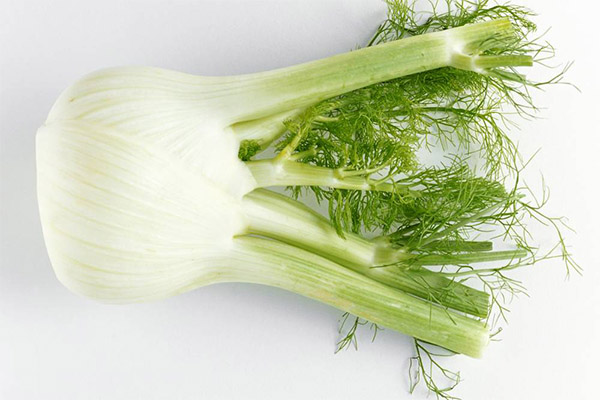
Beauticians are actively using drugs based on fennel:
- to increase the elasticity of the skin;
- activation of skin regeneration processes;
- improvement of metabolic processes;
- prevention of withering of the skin and the formation of micro wrinkles
- improving vascular tone in the subcutaneous layer;
- treatment of various types of acne and rashes;
- fight against the first manifestations of cellulite;
- comprehensive care for especially oily skin.
In folk medicine, lotions with fennel decoction are used to smooth wrinkles and remove bruises. Acne scars and marks are smeared with fennel oil for faster healing.
Cooking Application
Fennel is actively used in Mediterranean cuisine. All parts of this plant are used. Tubers can be baked in vegetable stew, with meat or fish. Many French and Italian recipes with white fish incorporate finely chopped fennel root. Baked carp stuffed with aromatic filling is especially popular. The famous Italian fennel sauce is made from tubers and leaves with the addition of cream, fish or meat broth and vermouth.
Fennel leaves are added to salads, they can be used as a decoration for a dish with an alluring aroma when setting the table. It is the leaves that are often added to various sauces, marinades and pickles.
Sunflower seeds go actively to salads and dishes, which need to give a piquant anise flavor. Often they are added to baking or filling. The seeds ground into dust are a bright spice, without which it is impossible to imagine the Spanish sausage Chorizo.
What can be replaced
Fennel is still not very popular in our country, although it can be easily found in shops or in the bazaar. The most difficult thing is to replace the greens - usually it is needed fresh and to decorate the dish. Dill is ideally similar, but it is worth remembering that this is only an external resemblance: aromas and tastes are completely different. Fennel spice is sold in stores; these are ground or whole dried seeds. They will give the desired anise flavor and piquant taste. Completely replace them will not work, the closest to the smell of the available seasonings - cumin.
Fennel root can be quite effectively replaced with petiole celery. The aroma will be poorer, but in general this is an adequate substitute, especially if the dish involves the use of finely chopped root and requires baking or stewing. Then even tasters familiar with the taste and aroma of fennel will not immediately determine the replacement.
Harm and contraindications
Any plant, especially with medicinal use, can cause significant harm if you do not follow the dosage and rules of administration. Fennel can pose a threat in the following areas:
- High content of heavy metals in the case of growth on roads or factories.
- Personal intolerance to complex acids.
- Allergic reaction.
- Disorders of intestinal motility with prolonged overdose.
- Increased risk of miscarriage in pregnant women, with the systematic use of tea or oil.
Teas and infusions are well tolerated even by infants. However, it is better to start with small doses and gradually increase them to better control the condition. Oils and extracts can be dangerous only with accumulated overdose of substances. For example, if you drink tea with fennel, eat salad and baked fish with fennel, and then use a limited dose of oil or extract, this will lead to an overdose.
It is contraindicated to use components based on fennel only to pregnant women. According to studies, the risk of miscarriage is increased by 12%. Fennel should be treated with caution in patients with epilepsy - sometimes there is a stimulation of a seizure when taking drugs based on it.
How to choose and store fennel
The most difficult thing is to choose and store the rhizome. It is necessary to find really fresh, only from the garden. The bulb should be solid, a little pale green, with the emerging stems opposite - a bright, saturated green color with an anise smell. Beware of sluggish and soft plants.
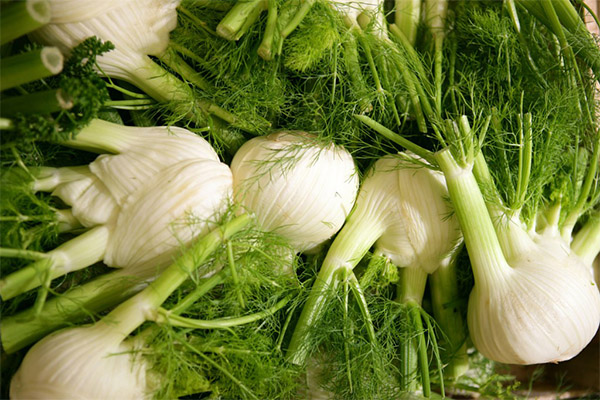
You should also pay attention to the integrity of the root, it is better to avoid cracks, damage and delamination of the sheet plates. Fresh fennel root is stored for a very short time, in the compartment for vegetables in the refrigerator it can last no more than 5 days. For medical purposes, the root can be cut into small pieces and dried, in this form it will retain its properties for up to six months.
Fresh herbs are stored even less, but this is traditional for this form of any plant. It is better to choose according to the saturated color and bright aroma.
Seeds are best preserved in their properties, they are collected and dried under a canopy, and then kept in a tightly closed container for up to a year. In industry, there is a powder form of spice, it can be found in stores in the spice department. It is simply ground dried seeds.
What can be prepared from fennel: recipes
Fennel is especially actively used in Mediterranean cuisine; salads are made from it, added to a side dish, stewed with vegetables and meat, used in baking stuffed fish or poultry.
Baked Fennel with Cheese
The simplest but delicious recipe as an independent dish or in addition to a side dish is baked fennel with cheese.
This is a tasty, healthy and very fragrant dish, which will require the following components:
- two fennel bulbs;
- a tablespoon of olive oil;
- 100 g of hard cheese, preferably parmesan;
- a pinch of sea or ordinary salt;
- a little pepper, you can fragrant;
- favorite greens and pomegranate seeds for decoration.
Fennel must be cleaned, cut off the stems and rhizome. Onions cut into rings of 7-10 mm or divide into quarters. It depends on the desired form of serving.
Preheat the oven to 180-200 degrees and prepare a baking sheet. Restaurant cooking involves blanching fennel in water for about 5 minutes. So you can open more aromatic bouquet. However, you can do without it.
Put the cut fennel root on a baking sheet, salt, pepper and drizzle with olive oil. Bake for 30 minutes, then check readiness. Fennel should be soft. It remains to sprinkle with cheese and put in the oven for another 3-5 minutes. Before serving, sprinkle the dish with herbs and pomegranate seeds.
Stewed fish with tomatoes and fennel
It is especially good to combine fennel with white fish. In France, Spain and Italy there are many different dishes - stuffed carp, trout, and fish. However, the simplest and at the same time revealing a rich taste dish is stewed fish with tomatoes and fennel.
The following products are required for cooking:
- 400 g of fish fillet, it is better to use white sea fish;
- fennel bulb;
- 2 cloves of garlic;
- two tomatoes;
- three tablespoons of olive oil;
- four thin mugs of lemon;
- 100 ml of water;
- ground pepper;
- salt.
For the French variation of this recipe, add 60 ml of dry white wine. However, you can do without it.
Peel the fennel, halve and cut into circles. If only an enticing aroma in fish and gravy is desired, then you can cut into a small cube. Fillet divided by portions. Cut tomatoes into small cubes, and garlic into slices.
Pour water, olive oil into a stewing container, add lemon, fennel, tomatoes, spices and garlic. Bring the composition to a boil, cover and leave to simmer for 15 minutes. Tomatoes, fennel, garlic and sourness from a lemon will go to the sauce.
Add a little pepper and salt to the fish, lightly sprinkle with oil and place in the prepared sauce. If the dish is prepared with wine, then pour it at this stage with the fish. Stew further until tender, it depends on the type of fish and the thickness of the fillet. A thin sea bass will be ready in 12-14 minutes. Serve the dish with a fragrant and great looking sauce. You can add your favorite greens for 2-4 minutes before removing from heat.
Interesting facts about fennel
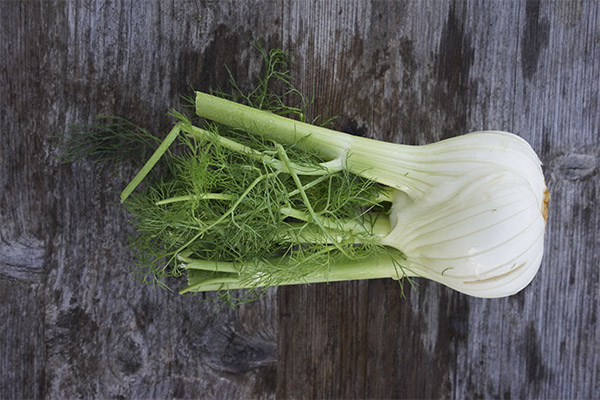
- Fennel is known to people from antiquity. However, even now there is some debate about its origin. The first information about the plant came from Greece, then it quickly spread to Egypt and west to Europe. However, perhaps the first to use fennel in Persian cooking. Another theory speaks of more ancient times in Assyria.
- Now known name - fennel - the plant has already received from the Romans. This is Latin for hay. Initially, the Greeks called it the "marathon" - that is how he entered the first treatises of thinkers and physicians.
- In India, fennel acted as a modern breath freshener. The seeds simply chewed before important negotiations or meetings. A pleasant aroma filled the mouth and freshened the breath. This tradition was then firmly rooted in medieval Europe.
- Fennel seeds are included in both of the most popular oriental spice sets. The Chinese “5 Spices” and the Indian “Punch-Phoron” have ground seeds. They add a piquant and slightly anise flavor to the overall collection of spices.
- Fennel has had vast mystical meanings in many cultures. Anglo-Saxons considered it a sacred plant, listing 9 of the most important and requiring worship. In the Middle Ages it was believed that a decoction of fennel and St. John's wort was able to ward off a witch and any unclean power. By the way, this has some basis: the fumes from such a decoction really drive away almost all insects.
- On the island of Madeira there is the city of Funchal, named after fennel. In Portuguese, the plant is called "funchus". The first colonists discovered a lot of wild fennel in the district and gave the new city the corresponding name.
«Important: all information on the site is provided exclusively in fact-finding purposes. Before applying any recommendations, consult with a profile specialist. Neither the editors nor the authors are liable for any possible harm caused materials. "





